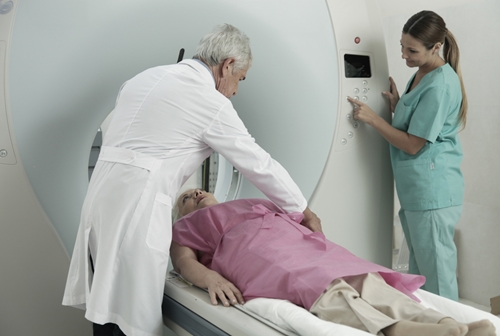The National Institutes of Health on Feb. 25 announced the first use of a photon-counting-detector-based computed tomography scanner in a clinical setting. From September to November of last year, investigators from the agency used this new medical imaging technology to perform abdominal CT scans on 15 patients. The trial was conducted at the NIH Clinical Center in Bethesda, Maryland. The results were published in the journal Radiology.
The NIH plans to conduct a five-year, follow-up trial using the photon-counting-detector-based CT scanner. Approximately 45 participants have been recruited for the new study.
Dr. David Bluemke, chief of the Department of Radiology and Imaging Sciences at the NIH, will lead it.
"The NIH Clinical Center has helped shape and share research advances and health care for decades," Bluemke said in a news release. "Now is an exciting time for us and for our study participants here in the Clinical Center as we help test and develop this CT technology so that it may one day help patients around the world and impact the health care they receive."
Bluemke and his team plan to develop scan protocols and algorithms aimed to improve screening, imaging and treatment planning for cancers and cardiovascular diseases.
Photon-counting-detector-based CT scanners provide a higher level of anatomical detail and expose patients to significantly lower doses of radiation than conventional scanners, reported AuntMinnie.com. They can detect tumors less than half a millimeter in size and better identify soft tissue like collagen and tendons.
"CT scanners with photon-counting detectors have a number of theoretical advantages over current CT scanners, which have energy-integrating detectors," Cynthia McCollough, Ph.D., director of the Mayo Clinic's Clinical Innovation Center in Rochester, Minnesota, explained during an information session at Radiological Society of North America's annual meeting this past November. "Photon-counting scanners can reject electronic noise, which negatively affects image quality more and more as dose decreases. The other is that the lower energy photons – which carry more information about iodine – are not weighted equally with energy-integrating detectors; there the high-energy photons – which have little iodine information – are counted the most strongly."
Only three facilities in the world house photon-counting-detector-based CT scanners. The Mayo Clinic in 2014 acquired the first prototype and has since used it in a number of preliminary studies. The organization hopes to develop a commercialized version of the machine in the near future.
Ronny Bachrach
Latest posts by Ronny Bachrach (see all)
- Konica Minolta Debuts First-of-Its-Kind Digital U-Arm System at AHRA - July 27, 2016
- Researchers Detect Signs Of Stroke Risk Using MRI - June 27, 2016
- Imaging Biz: Q&A with David S. Channin MD: How to Make PACS Patient Centered - June 22, 2016






